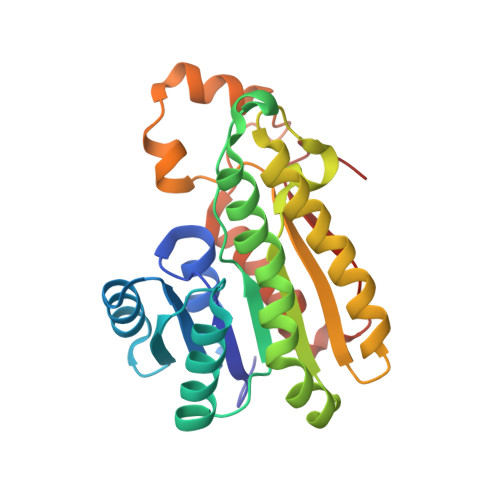Cofactor-Induced Conformational Rearrangements Establish a Catalytically Competent Active Site and a Proton Relay Conduit in FabG
Price, A.C., Zhang, Y.-M., Rock, C.O., White, S.M.(2004) Structure 12: 417-428
- PubMed: 15016358
- DOI: https://doi.org/10.1016/j.str.2004.02.008
- Primary Citation of Related Structures:
1Q7B, 1Q7C - PubMed Abstract:
beta-Ketoacyl-acyl carrier protein reductase (FabG) is a key component in the type II fatty acid synthase system. The structures of Escherichia coli FabG and the FabG[Y151F] mutant in binary complexes with NADP(H) reveal that mechanistically important conformational changes accompany cofactor binding. The active site Ser-Tyr-Lys triad is repositioned into a catalytically competent constellation, and a hydrogen bonded network consisting of ribose hydroxyls, the Ser-Tyr-Lys triad, and four water molecules creates a proton wire to replenish the tyrosine proton donated during catalysis. Also, a disordered loop in FabG forms a substructure in the complex that shapes the entrance to the active site. A key observation is that the nicotinamide portion of the cofactor is disordered in the FabG[Y151F].NADP(H) complex, and Tyr151 appears to be necessary for high-affinity cofactor binding. Biochemical data confirm that FabG[Y151F] is defective in NADPH binding. Finally, structural changes consistent with the observed negative cooperativity of FabG are described.
Organizational Affiliation:
Department of Structural Biology, St Jude Children's Research Hospital, Memphis, TN 38105 USA.















